Against the backdrop of leaders in all walks of life inexplicably unable to absorb the self-evident proposition that rigorous education and human capital development is the essential precondition of national progress, on the 20th anniversary of EducationWorld we do some crystal ball gazing to forecast the shape, form and efficacy of Indian education circa 2030 – Dilip Thakore
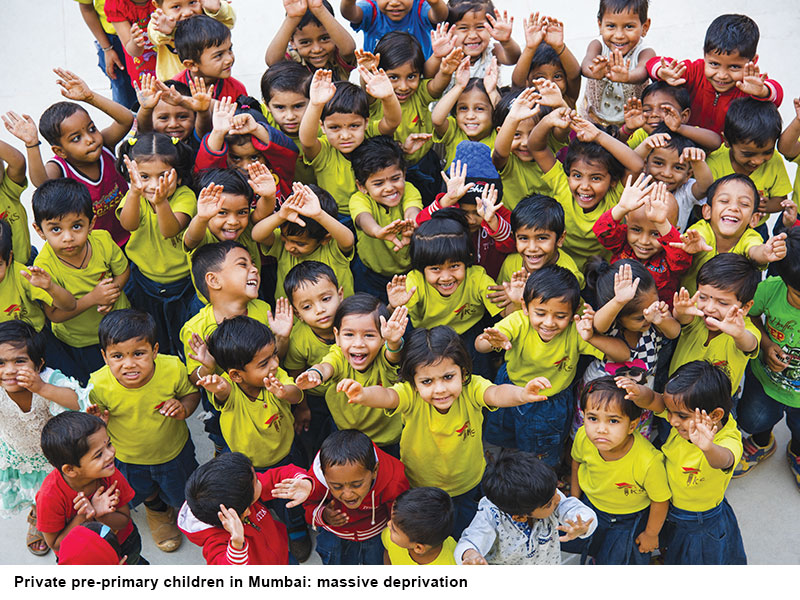 EducationWorld was launched on November 1, 1999 with the ambitious mission statement to “build the pressure of public opinion to make education the #1 item on the national agenda”. On our 20th anniversary, even as mandarins of the Union human resource development (HRD) ministry in New Delhi are giving final shape and form to the National Education Policy 2019 based on the 484-page report of the K. Kasturirangan Committee which was made public in May this year, this is a good time to do some crystal ball gazing to ascertain the shape and contours of Indian education ten years hence, i.e, 2030.
EducationWorld was launched on November 1, 1999 with the ambitious mission statement to “build the pressure of public opinion to make education the #1 item on the national agenda”. On our 20th anniversary, even as mandarins of the Union human resource development (HRD) ministry in New Delhi are giving final shape and form to the National Education Policy 2019 based on the 484-page report of the K. Kasturirangan Committee which was made public in May this year, this is a good time to do some crystal ball gazing to ascertain the shape and contours of Indian education ten years hence, i.e, 2030.
Certainly, since the inaugural issue of EducationWorld — The Human Development Magazine, the country’s first exclusively education-focused publication, sounded the first blast of the trumpet calling for deep and comprehensive reforms in primary, secondary and higher education, the subject has moved from being a blip on the radar of national consciousness to a dot. But even this dot is, at best, midway between the periphery and centre point of national consciousness. Although the number of seminars and conferences, education festivals and rain of awards conferred upon the country’s top-ranked education institutions by several self-styled education magazines — which have piled onto the road prepared by this publication — has risen impressively since the dawn of the new millennium, they signify little in terms of better learning outcomes and meaningful upgradation of India’s moribund preschool to Ph D education system.
Depressingly, although an estimated 10 million of the country’s 164 million infants in the 0-5 age group receive professionally-administered ECCE (early childhood care and education) in private pre-primaries (aka preschools) and 85 million receive a modicum of ECCE in 1.36 million anganwadis — essentially nutrition centres for newborns nd lactating mothers (also mandated to provide education to infants), 69 million children in this vulnerable and critically important age group don’t receive any professionally administered ECCE.
In primary/elementary education (class I-VIII) too, despite much sound and fury, there is precious little progress. Year after year, the detailed Annual Status of Education Report (ASER) of the Pratham Education Foundation which measures actual learning outcomes of children in rural India through field administered tests, has been highlighting that though primary school enrolments have improved dramatically, children’s learning outcomes are declining. For instance, according to the latest ASER 2018, 55.8 percent of class V children in government rural primaries (and 34.9 percent in private rural primaries) can’t read and comprehend class II textbooks written in their own vernacular languages, and 56 percent of class VIII students cannot solve simple three-digit division sums. Yet there’s minimal public outcry against these shocking revelations.
The on-ground situation in secondary and higher secondary education isn’t any better. New digital technologies enabled pedagogies, which stimulate and develop the critical and analytical thinking and problem-solving capabilities of teenagers, have been introduced at best, in 20,000 of the country’s 320,000 private independent (unaided) primary-secondary schools, while the overwhelming majority of 21st century India’s 1.20 million government schools are mired in the rut of rote learning and memorisation of facts and data readily available at the click of a computer mouse. In 2010, in a foolhardy adventure, then Union HRD minister Kapil Sibal entered a mixed cohort of teenage students from Himachal Pradesh and Tamil Nadu (India’s most educationally advanced states) to write PISA (Programme for International Student Assessment), a curriculum-neutral international test devised by OECD (i.e, industrially developed) countries which tests the English/French, science and maths capabilities of 15-year-olds. The Indian cohort was ranked #73 out of the 74 national student contingents that wrote PISA 2010. Since then India has opted out of PISA, finding fault with the assessment system.
Instead, the HRD ministry introduced its own indigenous field tests to track the unprepared learning outcomes of class X children. In 2015, the Delhi-based National Council of Educational Research & Training (NCERT) tested the real, unprepared learning outcomes of 277,416 class X students of 7,216 schools affiliated with the CISCE, CBSE and 31 state examination boards countrywide. The students were administered standardised tests in five subjects, viz English, maths, science, social science and a major Indian language. Except for students from CISCE and CBSE schools , all others failed (scored less than 50 percent) in maths, science and social sciences. Since then NAS (National Achievement Survey) in the 2015 format has been abandoned.
Real learning outcomes in higher education are nothing to write home about either. Although some of them are of over 150 years vintage, none of India’s 993 universities are ranked in the latest Top 200 World University Rankings (WUR) 2019-20 league table of Times Higher Education. Gallingly, seven Chinese universities are ranked among the THE 200.
Although in the equally authoritative annual WUR published by the London-based Quacquarelli Symonds (QS) three Indian universities are ranked in the Top 200 league table, according to a damning 2018 study of higher education in India by Aspiring Minds, a Delhi-based employees assessment and recruitment firm, 75 percent of graduates of India’s 3,122 engineering colleges and 85 percent of arts, commerce and science graduates are unemployable in Indian and foreign multinationals. Decades of failure and neglect to build strong pre-primary to higher education institutions is extracting a heavy price in terms of pervasive poverty, massive unemployment and poor workplace productivity from the world’s youngest nation with a median age of 29.
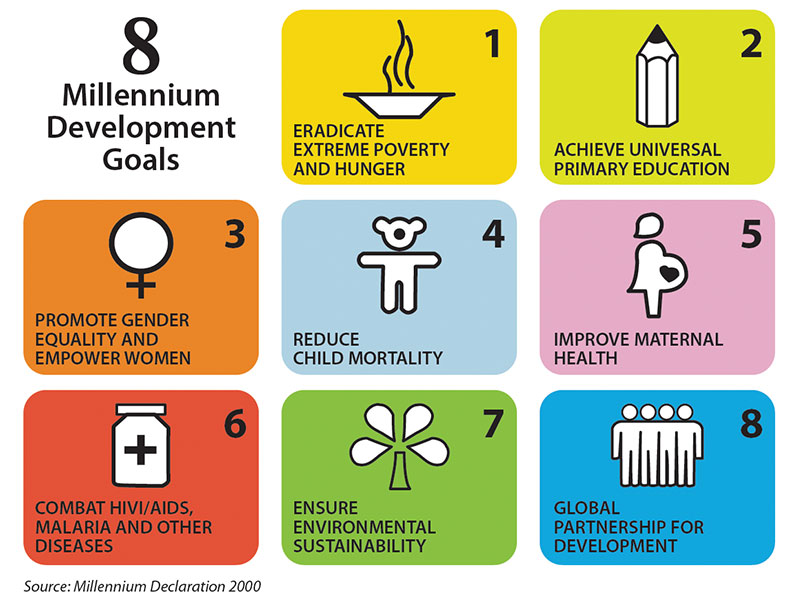 A cute public awareness of the ballooning crisis in Indian education began dawning as the world entered the 21st century. In September 2000, 191 member countries of the United Nations convened in New York, and signed the Millennium Declaration committing themselves to attaining the Eight Millennium Development Goals, one of which was every child in primary school and learning by the year 2015. Earlier on November 1, 1999 the first issue of EducationWorld was formally launched in Bangalore, with the avowed mission to pressure governments at the Centre and in the states to accord top priority to QEFA (quality education for all) to develop and nurture the country’s abundant yet wasting human capital.
A cute public awareness of the ballooning crisis in Indian education began dawning as the world entered the 21st century. In September 2000, 191 member countries of the United Nations convened in New York, and signed the Millennium Declaration committing themselves to attaining the Eight Millennium Development Goals, one of which was every child in primary school and learning by the year 2015. Earlier on November 1, 1999 the first issue of EducationWorld was formally launched in Bangalore, with the avowed mission to pressure governments at the Centre and in the states to accord top priority to QEFA (quality education for all) to develop and nurture the country’s abundant yet wasting human capital.
Although the academy and educracy which has shaped post-independence India’s lopsided public education system has studiously ignored EducationWorld for almost two decades, private edupreneurs and institutions which are setting the pace in K-12 and higher education innovation, enthusiastically welcomed this publication. EW has since established a national reputation as a strict monitor of India’s laggard education system, championing preschool to Ph D reform and global benchmarking. These factors have imposed great pressure on the country’s essentially self-serving neta-babu brotherhood which following the ill-defined tenets of post-independence India’s Nehruvian socialism, has driven the Indian economy, and especially public education and health, to the edge of a deep precipice.
It’s against this backdrop of India’s education system from pre-primary to Ph D in disarray, with the compromised neta-babu brotherhood failing to improve educational standards in government schools, colleges and universities, and instead preoccupied with dragging down the country’s too-few private education institutions of excellence to levels of dysfunctional government schools and higher education institutions, that on the occasion of the 20th anniversary of EducationWorld we resolved to do some crystal ball gazing to forecast the shape, form and efficacy of Indian education in 2030.
As elaborated above, the condition of Indian education is precarious with the great majority of preschools, primary-secondaries and colleges and universities pitchforking millions of under-prepared students into the next stage of education and the country’s low-productivity workplaces. Yet despite the sustained effort stretching over 20 years of this publication which has been ploughing a lonely furrow to disseminate and germinate the seeds of education excellence within the country’s hard soil, leaders in all walks of life — politics, industry, academia and the professions — are inexplicably unable to absorb the self-evident proposition that rigorous education and human capital development is the essential precondition of national development. These estates of the republic have idly stood by as feckless governments have continuously under-funded public education (and health) while splurging taxpayers’ money and public savings on defence, establishment expenses and unwarranted populist subsidies.
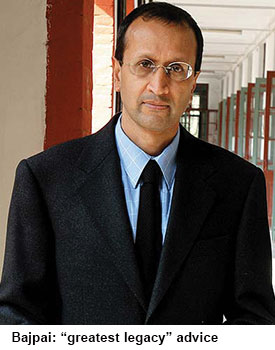 However, the silver lining is that even if belatedly, the academy and intelligentsia are beginning to acknowledge that neglect of public education for the past seven decades is the root cause of the multiple maladies roiling 21st century India. “Our education system is a scandal. Why? Our infrastructure, in schools, is calamitous: the campuses are shamefully provisioned and maintained. Schools are crippled by teacher absenteeism and principals who know nothing about school management. Our teaching is Dickensian. Pratham’s annual review of school education will make you cry. Language and mathematical skills are tragic: only half our class V students can read class II texts; a mere 40 percent in class VIII can do long division,” writes Kanti Bajpai, former headmaster of the top-ranked The Doon School (TDS) and currently professor at the National University of Singapore in the Times of India (October 5).
However, the silver lining is that even if belatedly, the academy and intelligentsia are beginning to acknowledge that neglect of public education for the past seven decades is the root cause of the multiple maladies roiling 21st century India. “Our education system is a scandal. Why? Our infrastructure, in schools, is calamitous: the campuses are shamefully provisioned and maintained. Schools are crippled by teacher absenteeism and principals who know nothing about school management. Our teaching is Dickensian. Pratham’s annual review of school education will make you cry. Language and mathematical skills are tragic: only half our class V students can read class II texts; a mere 40 percent in class VIII can do long division,” writes Kanti Bajpai, former headmaster of the top-ranked The Doon School (TDS) and currently professor at the National University of Singapore in the Times of India (October 5).
A pillar of the Nehruvian establishment, in this ToI essay, Bajpai advises prime minister Narendra Modi that education reform could become his “greatest legacy” if he resets his priorities. It might also be pertinent to note that during his long term as headmaster at TDS, the patrician Bajpai had ill-concealed disdain for this publication’s efforts in the cause of education reform.
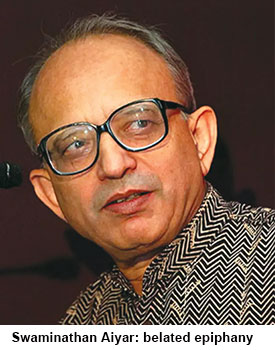 Likewise, Swaminathan Aiyar, former editor of the Economic Times and currently a star columnist of the Times of India who evidently entertains similar contempt for this tiny organ, recently experienced an epiphany about the vital importance of quality education for national progress and development. Writing about the “gloom that surrounds the end of the decade of the 2010s,” Aiyar attributes India’s perennially also-ran status in the global community of nations to a “third-rate education system”. “This can produce no more than a thin veneer of world-class graduates. India produces millions of third-rate graduates from third-rate universities who are just unemployable. India’s veneer of excellence provided enough people to create three world-class sectors in the 2000s. It has proved insufficient to create any more in the 2010s… India needs a totally new education system that emphasises academic excellence, world-class research, and world-class institutions. Unfortunately, no political party gives priority to academic excellence,” opined Aiyar in a belated insightful essay in the Sunday Times of India (September 8).
Likewise, Swaminathan Aiyar, former editor of the Economic Times and currently a star columnist of the Times of India who evidently entertains similar contempt for this tiny organ, recently experienced an epiphany about the vital importance of quality education for national progress and development. Writing about the “gloom that surrounds the end of the decade of the 2010s,” Aiyar attributes India’s perennially also-ran status in the global community of nations to a “third-rate education system”. “This can produce no more than a thin veneer of world-class graduates. India produces millions of third-rate graduates from third-rate universities who are just unemployable. India’s veneer of excellence provided enough people to create three world-class sectors in the 2000s. It has proved insufficient to create any more in the 2010s… India needs a totally new education system that emphasises academic excellence, world-class research, and world-class institutions. Unfortunately, no political party gives priority to academic excellence,” opined Aiyar in a belated insightful essay in the Sunday Times of India (September 8).
It’s against this sombre backdrop of a thoroughly rotten education system churning out millions of half-formed, low-productivity individuals with little more than clerical skills, that it has become incumbent upon your editors to make a realistic assessment of the status of pre-primary, K-12 and higher education in the next decade.
The bitter truth is that this publication’s sustained efforts to stimulate root-and-branch reform of 21st century India’s broken education system have fallen on unheeding ears of government policy formulators, school and university leaders as also teachers, parents and students. As a result, education is nowhere near the top of the national development agenda. Our exhortations to increase the annual government (Centre plus states) expenditure from 3.5 percent of GDP to 6 percent (and a detailed roadmap to mobilise required resources) have fallen on deaf ears; learning outcomes in school education are declining; syllabuses and pedagogies are obsolete and the greedy hand of government is squeezing the autonomy of public and private education institutions. With the Union government finalising the National Education Policy, 2019, based upon the recommendations of the K.
Kasturirangan Committee which submitted its draft NEP report to the HRD ministry on May 31, the dominant sentiment of educationists, education leaders and experts is of despair mixed with desperate optimism.
For instance, Prajodh Rajan, a business management alum of Madras University and currently president of EuroKids International, India’s largest pre-primary chain which manages 1,100 owned and franchised preschools in over 350 cities and towns countrywide with an aggregate enrolment of 90,000 infants, welcomes the high importance the NEP 2019 draft has accorded to early childhood care and education, and the proposal to integrate it with early primary classes for children in the 3-8 age group.
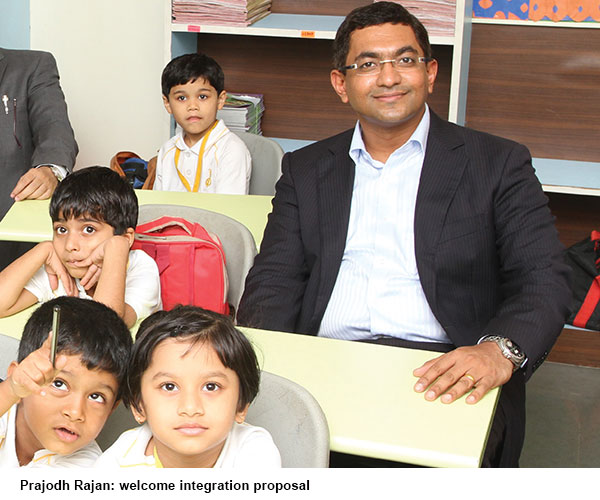
“The high importance given by the KR Committee to ECCE and its emphasis on professionally qualified educators for early childhood education is welcome. The committee’s proposal that children between 3-8 years should be taught through a flexible, play and activity-based system of education is good for young children who are often prematurely inducted into rigid, formal education. Hence, the committee’s proposal for a new curricular framework for foundational education is progressive. I believe that high quality preschool education providers have the necessary expertise to expand their reach to cover children in the 7-8 age group and also prepare youngest children for stress-free, developmentally appropriate formal school education,” says Rajan.
However, the real problem in ECCE is not in the 45,000-50,000 (Rajan’s estimate) private preschools (of whom the Top 10 in 16 cities are ranked in the annual EW India Preschool Rankings every December), but in the country’s 1.36 million public anganwadis established under the Central government’s Integrated Child Development Services programme (estb.1975) of the Union ministry of women and child development. Essentially nutrition centres for newborns and lactating mothers, they are also chartered to provide early childhood education to children in the 0-6 age group. However, because of continuous government under-funding, anganwadis countrywide accommodate only 85 million of the total 164 million children in the 0-5 age group.
Rajan cautiously admits that the early childhood education the anganwadis provide is rudimentary. “They are doing good work in providing care through nutrition to children in early years and other aspects related to physical development. However, the focus on learning is at a very elementary level with poor emphasis on school readiness. To deliver effective age-appropriate education, anganwadis need to undergo significant skill and infrastructure upgradation to make teaching-learning more effective,” adds Rajan.
The future of the early childhood education sector looks bright because the KR Committee has not recommended government interference with privately managed preschools, except issuing guidelines for foundational education. Therefore, although the neta-babu brotherhood is eager and state-level educracies are itching to control and command the country’s private preschools which are currently beyond their remit, there is a strong likelihood of NEP 2019 directing the Union HRD ministry and state governments to focus their attention on multiplying and upgrading 1.36 million anganwadis which provide little more than nominal ECCE to only half of the country’s 164 million children in the 0-5 age group.
However, within the country’s estimated 320,000 private unaided and 400,000 budget private schools (BPS) which host 60 percent of all children in primary-secondary education, there is rising apprehension of greater government interference and dilution of curricular and financial autonomy. This is especially true of private independent (unaided) schools which are frontrunners in introducing curricular innovations, new pedagogies and globally benchmarked K-12 education.
These apprehensions are justified. NEP draft recommends an elaborate, multilayer supervisory and regulatory structure for primary-secondaries which if accepted by government and incorporated into NEP 2019, will substantially dilute the autonomy of private independent schools, if not extinguish it altogether.
The KR Committee proposes separation of the functions of policy formulation, regulation, operations and setting of academic standards. In all states, the Department of School Education (DSE) or RjSA (Rajya Shiksha Aayog/State Education Commission) with the chief minister as chairman and education minister as vice chair will be the apex policymaking body. An independent SSRA (State School Regulatory Authority) “will handle all aspects of school regulation including oversight of the school system and implementation of accreditation”. The 10-15 member SSRA will report to the RjSA/chief minister and will hear and redress public grievances (including tuition fees regulation) with powers to shut schools down if accreditation norms are not satisfied. Moreover, at the Centre there will be a Rashtra Shiksha Aayog/National Education Commission chaired by the prime minister with all chief ministers as members to supervise pre-primary to class XII education countrywide.
Moreover, in its questionable wisdom the KR Committee has invested School Management Committees (SMCs) mandated by s.21 of the RTE Act, 2009, that are dominated by parents and local government officials with wide powers to regulate all including private schools. “The KR Committee has overlooked the reality that SMCs have completely failed to stem the rot in government schools. Despite this, the committee recommends SMCs with wider government controls over private schools,” comments Prof. Geeta Kingdon, chair of education economics and international development at the Institute of Education, University College, London, and president of the City Montessori School, ranked the #1 co-ed day school in Uttar Pradesh (pop. 215 million) in the EW India School Rankings 2019-20.
In an essay written for EducationWorld (September 2019) Dr. Krishna Kumar, hitherto professor of education at Delhi University and former chairman of NCERT, adds: “Well-intentioned principals and teachers will wonder how NEP 2019 will confer the autonomy promised to enable them to pursue their professional goals. With so many new layers of authority added they (teachers and institution leaders) are likely to find themselves in the basement of a tall multi-floor structure of regulatory power… principals of government schools are used to living without any semblance of academic or professional space to apply their own sense of judgement and professional experience to improve school life. If the draft policy is approved, private school principals will now get a chance to empathise with their counterparts in government schools.” Kumar’s advice to the Union government is to review the policy draft “with the help of a hand-held magnifier”.
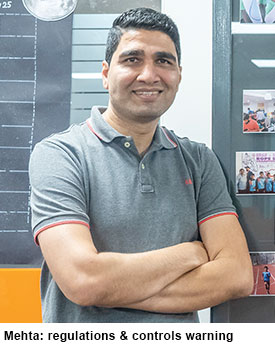 Unsurprisingly, private education entrepreneurs who have bona fide stepped forward to provide affordable high-quality education to hitherto neglected aspirational households in tier II-IV cities and small towns of India, are alarmed by the regulatory, command-and-control recommendations of the KR Committee. “The NEP 2019 draft has a coloured perspective of the role of private schools in delivering education. The regulatory framework recommended seems to rest on a bed of suspicion about the motives of private education entrepreneurs and advises strict control and monitoring. The plain reality is that private schools are the sole providers of high quality K-12 education. Therefore, they should be given greater respect and edupreneurs more incentives to promote greenfield schools. In particular, promotion of affordable schools should be especially encouraged because there is an urgent need to reduce the wide quality disparity between the country’s Top 3,000 high fees schools and the rest. This is the only way to democratise learning and develop the abundant human capital of our country. The numerous regulations and controls envisaged in the draft NEP 2019 will increase rent-seeking opportunities for corrupt government officials and discourage well-meaning education entrepreneurs to promote new schools,” warns Sumeet Mehta, an alum of the Punjab Engineering College and IIM-Ahmedabad and former top-rung executive at Proctor & Gamble, Singapore and Zee Learn and currently co-founder and CEO of Leadership Boulevard Pvt. Ltd (estb.2012), a company which has established four owned and signed up 500 affordable (tuition fees: Rs.12,000-50,000 per annum) English medium pre-primary-higher secondary schools across India as partners (see p.88).
Unsurprisingly, private education entrepreneurs who have bona fide stepped forward to provide affordable high-quality education to hitherto neglected aspirational households in tier II-IV cities and small towns of India, are alarmed by the regulatory, command-and-control recommendations of the KR Committee. “The NEP 2019 draft has a coloured perspective of the role of private schools in delivering education. The regulatory framework recommended seems to rest on a bed of suspicion about the motives of private education entrepreneurs and advises strict control and monitoring. The plain reality is that private schools are the sole providers of high quality K-12 education. Therefore, they should be given greater respect and edupreneurs more incentives to promote greenfield schools. In particular, promotion of affordable schools should be especially encouraged because there is an urgent need to reduce the wide quality disparity between the country’s Top 3,000 high fees schools and the rest. This is the only way to democratise learning and develop the abundant human capital of our country. The numerous regulations and controls envisaged in the draft NEP 2019 will increase rent-seeking opportunities for corrupt government officials and discourage well-meaning education entrepreneurs to promote new schools,” warns Sumeet Mehta, an alum of the Punjab Engineering College and IIM-Ahmedabad and former top-rung executive at Proctor & Gamble, Singapore and Zee Learn and currently co-founder and CEO of Leadership Boulevard Pvt. Ltd (estb.2012), a company which has established four owned and signed up 500 affordable (tuition fees: Rs.12,000-50,000 per annum) English medium pre-primary-higher secondary schools across India as partners (see p.88).
Notwithstanding the fact that the great majority of private school promoters are apprehensive about the command-and-control regulatory structure proposed in the NEP 2019 draft and its impact on private schools, Lt. Gen. (Retd.) Arjun Ray, AVM, PVSM, brilliant strategist of the high-end Indus International School, Bangalore (estb.2003), ranked India’s #1 in the international day-cum-boarding schools category for eight years consecutively in the annual EducationWorld India School Rankings, is convinced that public pre-primary to higher secondary education is poised or a great leap forward in the coming decade. “I visualise a huge improvement in government school education in the next decade in terms of learning outcomes, teacher development initiatives and sharply reduced teacher absenteeism. There is a great hunger countrywide for good quality education and a national consensus has emerged that the government school system requires urgent, comprehensive reform. I believe public pressure will compel governments at the Centre and in the states to sharply upgrade the government school system. Currently, we have a decisive government at the Centre. And historically, strong governments have always proved good for education,” says Ray, who dismisses the control-and-command apprehensions of private school managements as “temporary self-correcting blips”.
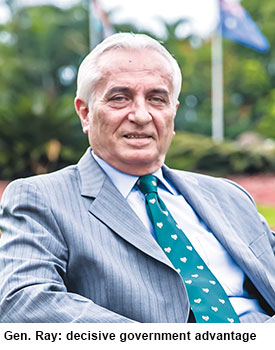 Gen. Ray’s sunny optimism is not shared by edupreneurs in the all-important skills education sector which was almost completely neglected for over half a century after independence. However, in the new millennium when reports in the media (especially EducationWorld) began highlighting that only 4 percent of India’s 420 million labour force has received any type of formal vocational training cf. 30 percent in China, 60 percent-plus in the US and UK and 80 percent in South Korea, the critical importance of vocational education and training has impacted the establishment, if not the public, with great force.
Gen. Ray’s sunny optimism is not shared by edupreneurs in the all-important skills education sector which was almost completely neglected for over half a century after independence. However, in the new millennium when reports in the media (especially EducationWorld) began highlighting that only 4 percent of India’s 420 million labour force has received any type of formal vocational training cf. 30 percent in China, 60 percent-plus in the US and UK and 80 percent in South Korea, the critical importance of vocational education and training has impacted the establishment, if not the public, with great force.
In 2008, the Congress-led UPA government at the Centre established the National Skill Development Corporation, a joint Union government-India Inc enterprise to fund private firms to train and certify neo-literates and school dropouts in 21 sectors to “fulfil the growing need in India for skilled manpower across sectors and narrow the existing gap between the demand and supply of skills”. The general consensus is that this initiative has failed because a large number of fly-by-night training firms availed loans disbursed by the corporation and have provided indifferent VET and recklessly certified large numbers of youth who are not acceptable to Indian industry.
However, the huge nationwide alarm for skills education served the useful purpose of prompting the promotion of several reputed private universities such as the Rabindranath Tagore (formerly AISECT) University, Bhopal; Centurion University, (estb.2005) in rural Odisha and Bharatiya Skill Development University, Jaipur, which are dispensing high-quality skills education to an increasing number of youth from across the country.
Brig. (Retd.) Dr. Surjit Singh Pabla, an alum of the College of Military Engineering, Pune, and IIT-Bombay, former pro vice chancellor of Sikkim Manipal University, founder vice chancellor of Manipal University, Jaipur, and currently pro vice chancellor of the mint new Bharatiya Skill Development University (BSDU, estb.2017), is struggling to get BSDU off the ground. According to Pabla, although in the top echelons of the BJP-led NDA government, there’s a commendable urgency to disseminate skills education countrywide, bureaucratic inertia and red tape has prevented this Rajasthan state government legislated “only pure play skills university worldwide” from scaling its operations.
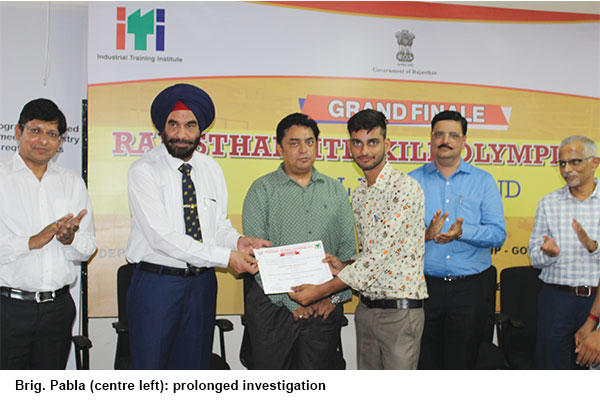
“BSDU was founded by the India-born Switzerland-based Dr. Rajendra K. Joshi — a BITS-Pilani graduate, who promoted and later sold a major pharmaceuticals company in Switzerland — and his wife Ursula. Dr. and Mrs Joshi analysed the reasons for Swiss industry being numbered among the best worldwide. The main reason they found, was the perfected skill development scenario in Switzerland. The outcome of their effort is BSDU, established by special legislation enacted by the Rajasthan legislative assembly two years ago. Since then we have installed the most modern machinery of any education institution in the country for our students to work under our ‘one machine-one student’ pedagogy and have enrolled 600 students. But further expansion and scaling has been stalled because the university is being subjected to prolonged investigation under the FCRA (Foreign Contribution Regulations Act, 2010). This delay has been compounded by the sudden demise of our founder chancellor Dr. Joshi on October 1,” laments Pabla.
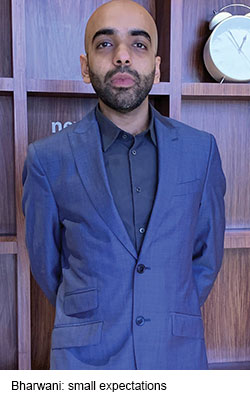 Likewise, Siddarth Bharwani, an alum of Australia’s top-ranked Bond University and currently VP – Brand and Marketing of the Mumbai-based Jetking Infotrain Ltd (estb.1947), a digital skills and networking training institute which offers one-six month diploma programmes to technical and non-technical students in 100 centres across India and claims to have certified over 1 million students, believes that the draft NEP 2019 is well intentioned, but its recommendations are insufficient. “Delivery of VET in India has never been effective because there’s little awareness that it has three essential components. First, every VET provider has to assess the capability of the student to derive benefit from a chosen programme. Secondly, every course has to be personalised to enable students to immerse themselves in it, and thirdly every programme requires industry validation. Provision of skills education requires excellent industry-academia co-operation. There’s no mention of this in the draft NEP and therefore I don’t expect much out of the final NEP 2019 either,” says Bharwani.
Likewise, Siddarth Bharwani, an alum of Australia’s top-ranked Bond University and currently VP – Brand and Marketing of the Mumbai-based Jetking Infotrain Ltd (estb.1947), a digital skills and networking training institute which offers one-six month diploma programmes to technical and non-technical students in 100 centres across India and claims to have certified over 1 million students, believes that the draft NEP 2019 is well intentioned, but its recommendations are insufficient. “Delivery of VET in India has never been effective because there’s little awareness that it has three essential components. First, every VET provider has to assess the capability of the student to derive benefit from a chosen programme. Secondly, every course has to be personalised to enable students to immerse themselves in it, and thirdly every programme requires industry validation. Provision of skills education requires excellent industry-academia co-operation. There’s no mention of this in the draft NEP and therefore I don’t expect much out of the final NEP 2019 either,” says Bharwani.
Given that all nine members of the KR committee were academics drawn from higher education institutions, the reform recommendations the NEP 2019 draft proposes for higher education are more rational and efficacious. For instance its recommendation that the licensing, policy formulation, regulatory, accreditation and assessment functions of colleges and universities are separated and invested in separate autonomous institutions, instead of being vested in the Union HRD ministry and handmaiden institutions such as UGC, AICTE, and NAAC, is widely welcomed. Division of the vast judge, jury and executioner powers vested in UGC and AICTE will surely improve learning outcomes and raise standards in the academy. Similarly, the KR Committee’s proposal that the standard three-year undergrad degree programme should be extended to four years with one year of liberal arts study made compulsory for all students, has been widely welcomed. Moreover, other recommendations in the draft NEP stressing the importance of research and skilling in large multi-disciplinary universities have also struck a resonant chord in academia.
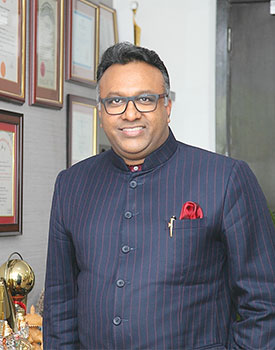 I support the idea of establishing multidisciplinary universities in India. Most of the top 100 universities of the world — Oxford, Cambridge, Harvard, Yale, Stanford, Princeton, Cornell, University of Tokyo, University of Hong Kong, National University of Singapore, Tsinghua and Peking — are multidisciplinary institutions providing STEM, liberal arts, humanities and social sciences study programmes. If we are serious about building world class universities in India, we need to focus on a new imagination of higher education with government and private philanthropists and entrepreneurs given equal opportunity to build globally benchmarked universities. However, as for the compulsory year of liberal arts study, it’s not advisable to dictate the time of the year of study. In my opinion universities should have the autonomy to translate broad policy into curriculums and courses. Admittedly, it is a desirable objective to make undergraduate studies more interdisciplinary with a fair number of liberal arts options in the curriculum. But in the world’s best universities, translation of national policy objectives is the province of university administrations and management,” says Dr. C. Raj Kumar, founder vice chancellor of the new-genre law and liberal arts O.P. Jindal Global University, Sonipat, Haryana (estb.2009) which has swiftly captured the imagination of India’s post-liberalisation middle class.
I support the idea of establishing multidisciplinary universities in India. Most of the top 100 universities of the world — Oxford, Cambridge, Harvard, Yale, Stanford, Princeton, Cornell, University of Tokyo, University of Hong Kong, National University of Singapore, Tsinghua and Peking — are multidisciplinary institutions providing STEM, liberal arts, humanities and social sciences study programmes. If we are serious about building world class universities in India, we need to focus on a new imagination of higher education with government and private philanthropists and entrepreneurs given equal opportunity to build globally benchmarked universities. However, as for the compulsory year of liberal arts study, it’s not advisable to dictate the time of the year of study. In my opinion universities should have the autonomy to translate broad policy into curriculums and courses. Admittedly, it is a desirable objective to make undergraduate studies more interdisciplinary with a fair number of liberal arts options in the curriculum. But in the world’s best universities, translation of national policy objectives is the province of university administrations and management,” says Dr. C. Raj Kumar, founder vice chancellor of the new-genre law and liberal arts O.P. Jindal Global University, Sonipat, Haryana (estb.2009) which has swiftly captured the imagination of India’s post-liberalisation middle class.
This plea for institutional autonomy deserves the serious attention of HRD ministry bureaucrats who are giving final touches to NEP 2019, because Dr. Raj Kumar has deep knowledge of higher education around the world. An alumnus of Madras, Delhi and Oxford (UK) and Harvard (USA) universities, with research, teaching and admin experience of working with the New York University Schoolof Law, Meiji Gakuin University, Tokyo, Toin University of Yokohama, Japan and a six-year stint as professor of law at City University of Hong Kong (2002-08), in 2007, Raj Kumar was hand-picked by industrialist-philanthropist and former member of Parliament, Navin Jindal to establish the greenfield O.P. Jindal Global University (JGU) in memory of his father, the steel magnate O.P. Jindal, also a former member of Parliament.
In the EducationWorld India Private University Rankings 2019-20, JGU is ranked #6 nationally, and the highly respected London-based Quacquarelli Symonds (QS) which publishes its global World University Rankings annually, ranks JGU among Asia’s Top 450 universities in its latest 2019 league table.
Indeed, there is great wisdom in Dr. Raj Kumar’s implicit criticism that the K. Kasturirangan Committee’s NEP 2019 draft is too detailed, prescriptive and unmindful of institutional autonomy across the education continuum. Essentially, instead of recommending departure from past practices of rigid control and regulation of public and private education by the neta-babu brotherhood and the educracy — which have proved a miserable failure — the KR Committee’s draft recommends more of the same when the system requires decontrol and expanded institutional autonomy.
Indeed, the draft NEP 2019 has ignored the most important lesson to be learned from post-independence India’s egregious failure to develop its high-potential human resource. This lesson is that the proper role of the Central, state and local governments is to focus their attention upon upgrading and modernising the country’s 1.20 million public/government primary-secondaries which are providing rock-bottom education to over 120 million children. These children need to be brought on a par with the 130 million in private education.
Moreover experience of the past seven decades mandates that private schools — especially the country’s 320,000 private independent (unaided) education institutions which are reputed islands of excellence in a sea of mediocrity — need to be given maximum autonomy to operate within a broad regulatory framework of specified nation-building goals and objectives.
At a critical time in the nation’s history when a broad consensus has emerged that mending the country’s broken education system is the necessary precondition of 21st century India closing the widening gap between the developed industrial countries of the West and China in particular, the condition of India’s schools, colleges, universities and higher education institutions in 2030 depends on whether in its final shape and form the National Education Policy 2019 corrects this deep-rooted contradiction of Indian education.
Higher education excellence prescription
A polymath alumnus of Madras, Delhi, Oxford (UK) and Harvard (USA) universities with teaching and administrative experience acquired in the New York University School of Law, Gakuin University, Tokyo, Toin University, Yokohama and City University of Hong Kong, Dr. C. Raj Kumar is the founding vice chancellor of the new genre law and liberal arts O.P. Jindal Global University, Sonipat, Haryana (JGU, estb.2009).
Within a decade of admitting its first batch of students, aggregate enrolment in JGU — arguably India’s most international university — has risen to 4,320 students mentored by 435 highly qualified faculty. Earlier this year, JGU was ranked among the Top 450 universities of Asia in the league table of the London-based Quacquarelli Symonds (QS) and among the Top 10 private universities of India by EducationWorld. Dilip Thakore persuaded Dr. Raj Kumar to share his prescription for reviving India’s moribund higher education institutions. His prescription:
- Encourage promotion of not-for-profit and philanthropic universities
- Government should respect academic freedom and institutional autonomy
- Multidisciplinary universities offering interdisciplinary learning should become normative
- Government should mandate transparent admission processes and abolish management quotas
- Universities should adopt internationalisation at the heart of institution building
- Higher education institutions (HEIs) should consciously hire outstanding faculty and researchers
- HEIs should develop culture of research and publications
- Accreditation, rankings and benchmarking should be institutionalised
- HEIs should promote diversity, inclusion, accessibility and community engagement
- HEI managements should encourage active participation of all stakeholders for good governance
“All universities also need to align their goals towards achieving the common good of excellence in higher education. To effectively promote the common good, the five prerequisites are: First, universities should pursue and create new knowledge through intensive research that will improve the lives of the general populace. Second, universities should provide high-quality teaching that enables and empowers young people to become enlightened national and global citizens. Third, universities should speak the truth to power through intellectual rigour, objective analyses and evidence-based research to impact policy formulation. Fourth, universities should benefit the community by promoting academic excellence and aligning their purpose with the common good. Lastly, universities should work towards developing a societal consensus, including government, private sector and civil society to define the common good. Pursuit of the common good needs to be integrated into the vision and mission statements of all universities,” says Raj Kumar.
Draft NEP 2019: Visionary rhetoric
Although some of the proposals contained in the draft National Education Policy 2019 of the nine-member Kasturirangan Committee, which is currently being given final shape and form by the Union government, have been contested, the 484-page report contains several inspiring visionary passages. Among them:
“India has had a long and illustrious history of holistic education. The aim of education in ancient India was not just the acquisition of knowledge, as preparation for life in this world or for life beyond schooling, but for complete realisation and liberation of the self. According to Swami Vivekananda, “Education is not the amount of information that we put into your brain and runs riot there, undigested, all your life. We must have life-building, man-making, character-making assimilation of ideas. If you have assimilated five ideas and made them your life and character, you have more education than any man who has got by heart a whole library. If education is identical with information, the libraries are the greatest sages of the world and encyclopedia are the greatest rishis.”
• Since the times of Nalanda and Takshashila or even earlier, the history of higher education in India recognised the holistic aspect of all human knowledge and enquiry as fundamentally connected. The holistic nature of knowledge as imparted through a broad and interwoven education, is an important factor for the preparation of students for life, work and to be effective members of society.
• By 2030-2032, we will be the third-largest economy at over $10 trillion. Our $10 trillion economy will not be driven by natural resources, but by knowledge resources. Are we ready to take our place besides the USA and China as the top three largest economies of the world and be confident of sustaining it in the following years? To do this, we will need a knowledge society based on a robust education system with all the requisite attributes and characteristics in the context of changes in knowledge demands, technologies and the way in which society lives and works.
• The (draft) National Education Policy 2019 provides a framework for the transformation and reinvigoration of the education system in order to respond to the requirements of fast-changing, knowledge-based societies while taking into account the diversity of the Indian people, their traditions, cultures and languages. It seeks to ensure that human capital, the most vital form of capital that would fuel the necessary transformation, is secured and strengthened.





















